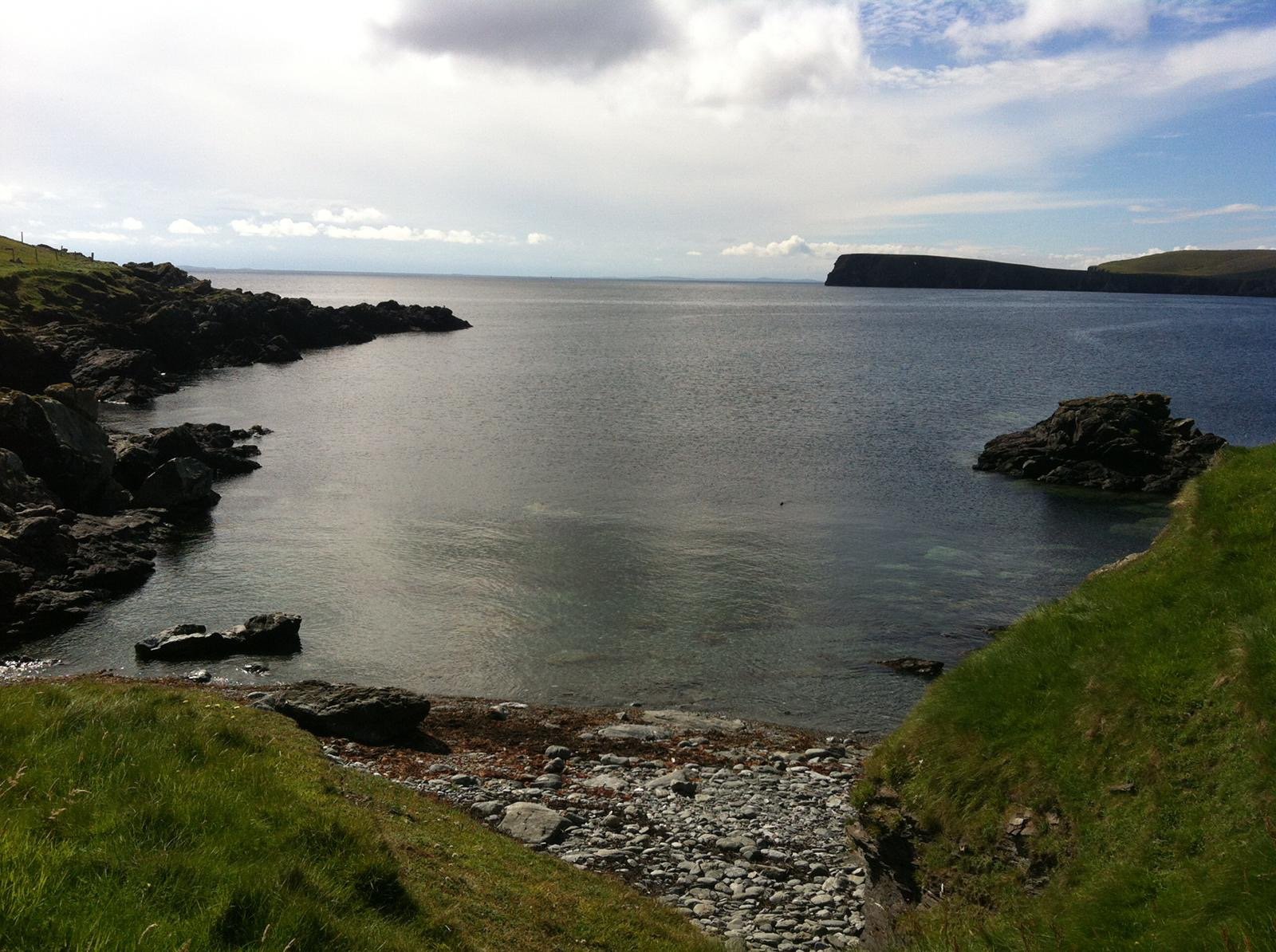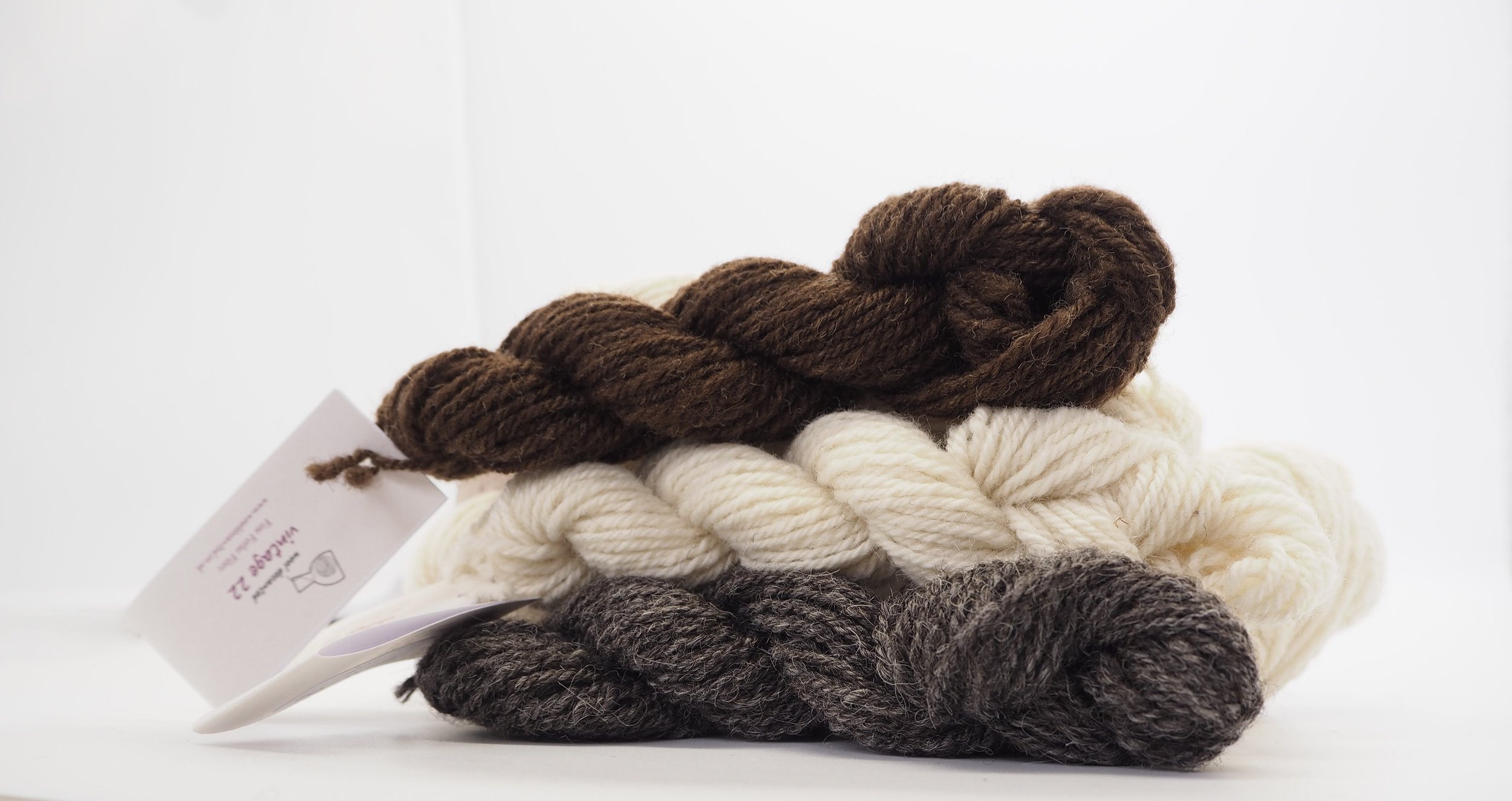Welcome to September
Hello everyone! Welcome to September - effectively the New Year for yarn lovers (at least in the Northern hemisphere) when we start thinking of sweaters, shawls and hats again. Yay!!
Linda modelling our best selling shawl - Hinterlands by Helen Stewart
Now I know it’s been a very long time since you’ve heard from us ! We’ve had a very busy year including the launch of two new yarns, Cellar Blends and vintage 22. More of that a bit later!
One of the most exciting things that happened to wool decanted over the Summer was our interview with the lovely Anne Frost of ‘I thought I knew how’ podcast. We spent an hour chatting with Anne about the background to wool decanted, our backgrounds, our wool and what plans we have next. If you get a chance you should listen to the interview because it’s the most we’ve talked about ourselves and our business since we began!
It’s a good listen – Lisa’s the one with the posh voice and I’m the Scottish one! If you’ve followed us at all on Instagram or Facebook you may have picked up that we’re a bit shy, not very good at pushing ourselves forward. Which is ironic given that we both spent our corporate years pushing our clients and their messages with great gusto. Incidentally, we’re not at all shy at yarn shows – we love face to face chats so don’t worry about coming up and introducing yourselves to us, we love that. We were very nervous but Anne’s interview helped us come out of our shells for sure and it also made us realise what we’ve achieved in the short time since we took delivery of our first batch of vintage 20 yarn in March 2021. We’ve come a long way!
You can listen to our podcast here
And that made us think about where we’ll go next. But I’m getting ahead of myself. Let me tell you a bit more about what we’ve been up to over the Summer.
We created the name Cellar Blends to distinguish these yarns from our own unique vintages that we process ourselves, but like our own yarns the Cellar Blends yarns are traceable to British farms and maintain our value of celebrating provenance in wool. Our first Cellar Blends batch is a gorgeous bouncy yarn using John Arbon’s Devonia DK – and more recently, 4ply – as a base.
The thing that drove us to create Cellar Blends was really an acknowledgement that having our own yarns processed, which we will continue to do, does take a long time. With so few mills in the UK and all of them working at capacity, it can take up to one year to get each batch of our own yarn produced and ready. All of which makes forward planning a bit hit and miss. So we decided to increase our capacity, and our planning abilities, by using beautifully prepared yarn bases and get involved in the craft of hand dyeing.
And, boy, has Lisa embraced this craft with both arms! She’s already created a palette of 9 warm colours which we chose from her original selection of 20. Bit of a story in the naming of the colours – we must have been in a very non-creative mindset when we first named them because one day in mid-Summer Lisa decided they were totally uninspiring and promptly renamed them to better reflect our interest in wine! So, for instance, Sea Foam became Vindigo – named after a blue wine. And yes there really is a blue wine out there! Check out the colours on the website to see how creative Lisa was that day – and send me a note if you want to know the original names!!
By the way, have I mentioned vintage 22? Now here’s a story! Vintage 22 is our first venture in processing single breed British yarn and it’s a gloriously robust pure Shetland DK yarn, full of character. The story of this yarn begins at a small party which we attended on a neighbour’s boat on our island. One of our newest island residents, meeting us for the first time at the party, was fascinated by the story of our wool journey and surprised us by saying that a couple of his relatives were farmers on one of the northernmost islands of Shetland, the island of Fetlar. And guess what, they keep Shetland sheep! Naturally, we went for it and arranged a spontaneous experiment to process a few of their fleeces into yarn. This turned into a very good learning curve for us.
The fleeces duly arrived from Shetland and immediately we knew we had an issue because whilst there was sufficient weight to meet our regular mill’s minimum requirement, that weight was made up of 4 different colours – all natural, but not enough of a single colour for our mill to process. Where to turn to?
This is when we found the remarkable and lovely David and Ruth of Rampisham Hill Mill in Dorset, which happens to be a stone’s throw from our favourite seaside resort of Lyme Regis. We had a chat with Ruth and were much relieved to hear that they could process the fleeces and we took them down to the mill. David and Ruth were patient with us as we pored over the raw fleeces, skirting and grading them. Remember this was the first time we’d worked with fleeces of differing qualities – up until now we’d been working with known farmers and pedigree fleeces of consistent quality. This was a terrific hands-on wool school session for us.
The finished wool, vintage 22, is full of character and although it doesn’t have the ‘next to skin’ softness of our vintage 20 and 21 yarns, I really like it. I’ve knitted swatches with the yarn and I can imagine it turned into fabulous outer garments. Unusually for a pure Shetland yarn, vintage 22 is a DK weight – most are fingering, 4ply for Fair Isle colour work knitting. And what is also beautiful about the yarn are the four different natural colours – white, speckled white, grey and moorit.
During the mill processing we learned about ‘rooing’. Rooing is when the outermost fibres of the fleece start to separate from the fibres that have been closer to the sheep’s skin. In some sheep breeds this will happen naturally. What this creates in the resultant yarn is an uneven staple, so you get some thick bits and thin bits throughout its length. And it’s known as ‘slubby’ yarn.
Some of our vintage 22 Fetlar yarn is in the slubby category. Many crafters, and designers, specifically look for slubby yarn because of the interesting fabric textures it creates. So, if you want an interesting and beautiful DK Shetland look no further! vintage 22 is already on the website but if you want to see it in person it will be displayed in all its glory on our stand at Unravel next week.
Speaking of Unravel, we have revamped our little booth and all our yarns will be displayed on the Wall of Wool – vintage 20, vintage 21, vintage 22 and Cellar Blends – for the first time ever! And we will have a little surprise on display too.
If you can get to Unravel do come and say hello to us and we’ll show you the surprise. And if you can’t get to Unravel, fear not! Our next newsletter which will come out shortly after the show will let you in on the surprise.
That’s been a long read from me, I hope you enjoyed it, and we’ll hope to see you soon.
Love your yarn!
Linda x









